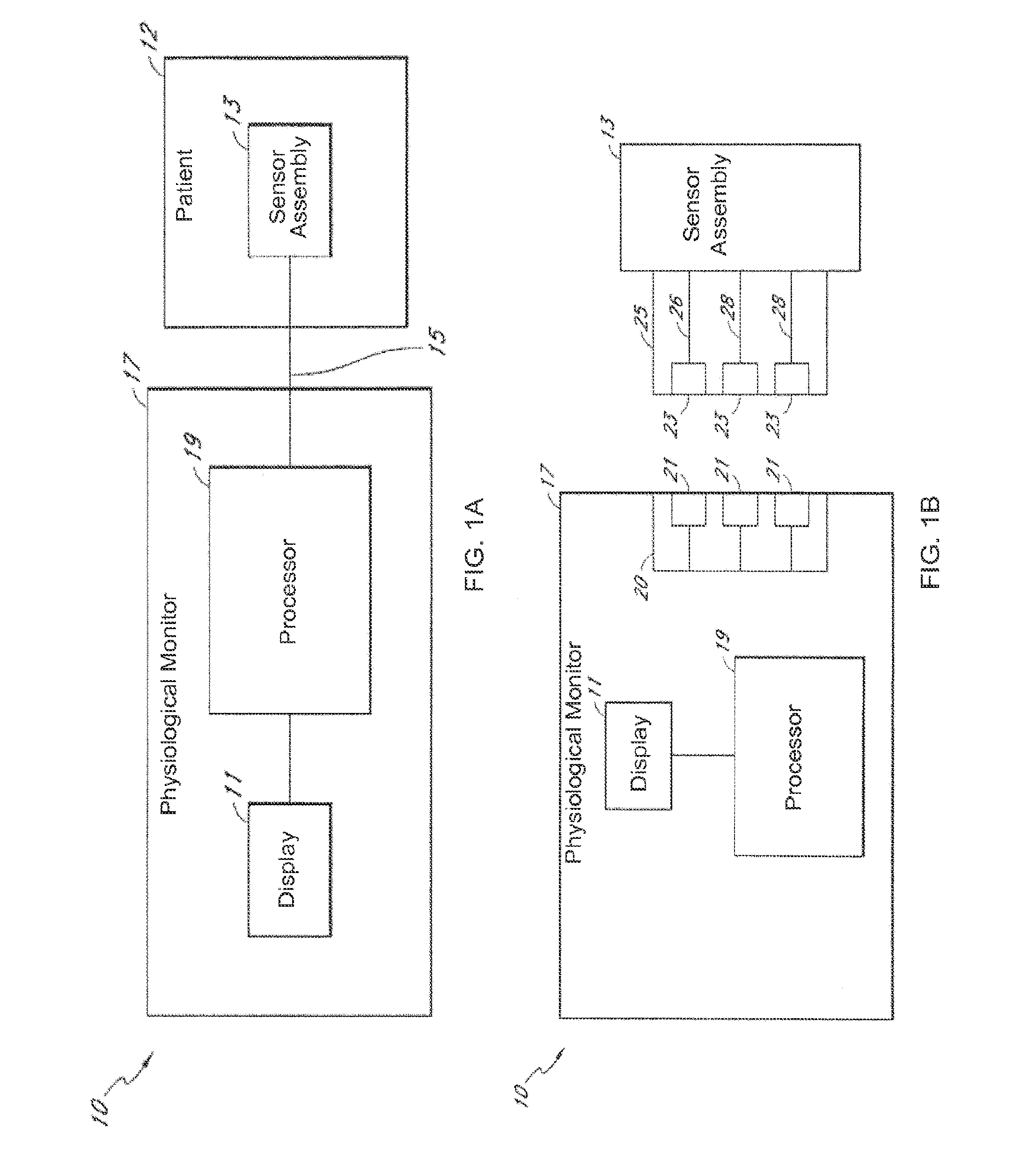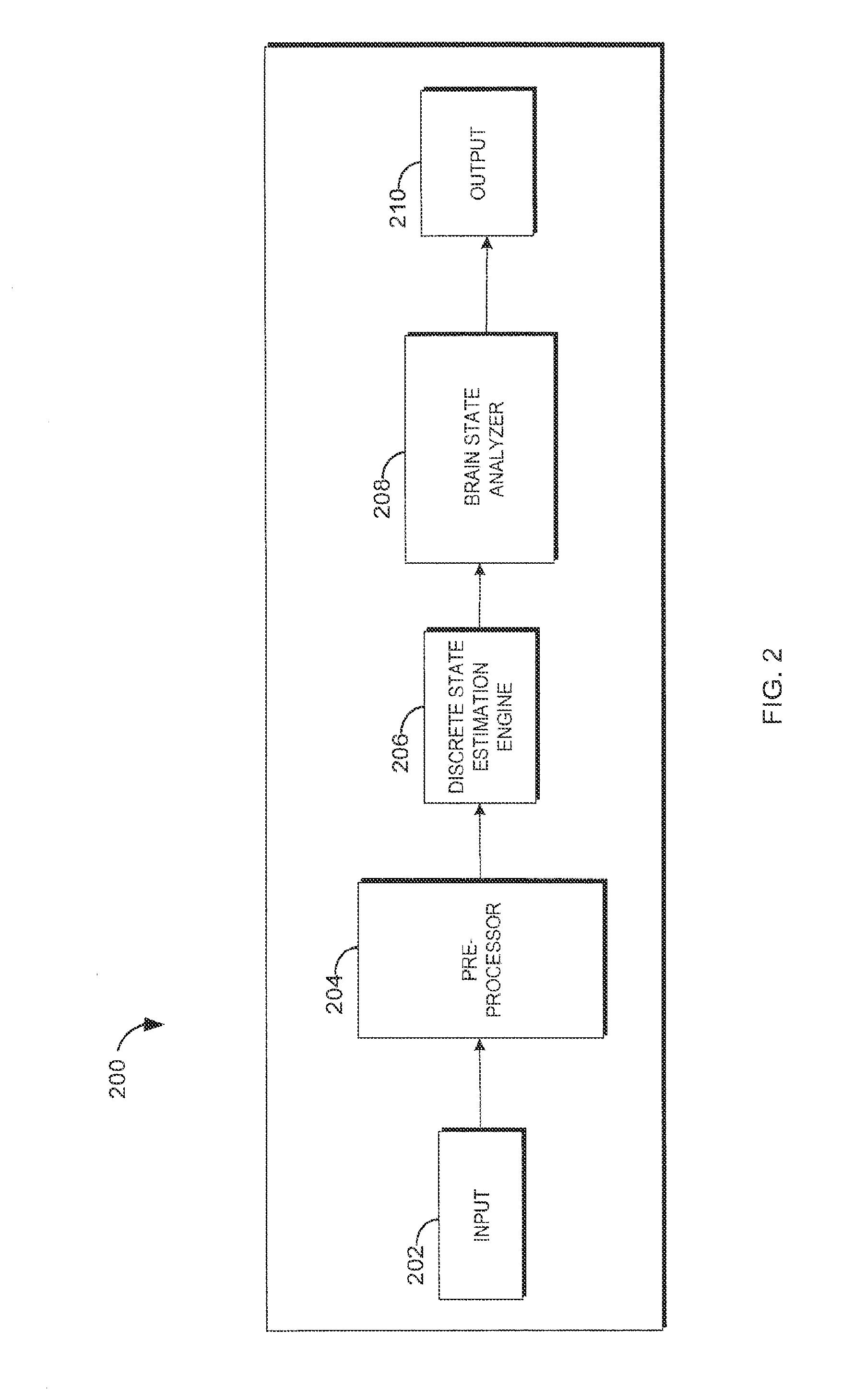System and method for determining neural states from physiological measurements
- Summary
- Abstract
- Description
- Claims
- Application Information
AI Technical Summary
Benefits of technology
Problems solved by technology
Method used
Image
Examples
Embodiment Construction
[0027]The present disclosure provide systems and methods that implement a statistically-principled approach to characterizing brain states of a patient using physiological data, such as electroencephalogram (“EEG”) data. Specifically, embodiments described herein allow for detection of discrete neural states, such burst, suppression states and artifacts, using a multinomial logistic regression approach in an manner that is automated and more objective than visual scoring of time-series data. In some aspects, use of frequency-domain information is described, recognizing that time-series data features, such as burst events, have an underlying oscillatory structure that may be more effectively used to characterize brain states of a patient. Such spectral signatures could be difficult to capture consistently with methods relying on time-domain data representations. As will be described, demonstrations of the efficacy of this approach are provided with respect to clinical EEG data acquir...
PUM
 Login to View More
Login to View More Abstract
Description
Claims
Application Information
 Login to View More
Login to View More - R&D
- Intellectual Property
- Life Sciences
- Materials
- Tech Scout
- Unparalleled Data Quality
- Higher Quality Content
- 60% Fewer Hallucinations
Browse by: Latest US Patents, China's latest patents, Technical Efficacy Thesaurus, Application Domain, Technology Topic, Popular Technical Reports.
© 2025 PatSnap. All rights reserved.Legal|Privacy policy|Modern Slavery Act Transparency Statement|Sitemap|About US| Contact US: help@patsnap.com



